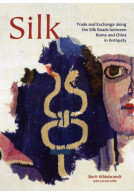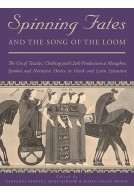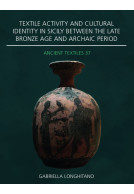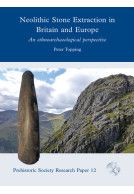Gods and Garments (Hardback)
Textiles in Greek Sanctuaries in the 7th to the 1st Centuries BC
Imprint: Oxbow Books
Series: Ancient Textiles
Pages: 384
Illustrations: b/w and colour
ISBN: 9781785703553
Published: 31st December 2016
Script Academic & Professional
Series: Ancient Textiles
Pages: 384
Illustrations: b/w and colour
ISBN: 9781785703553
Published: 31st December 2016
Script Academic & Professional
You'll be £14.95 closer to your next £10.00 credit when you purchase Gods and Garments. What's this?
+£4.99 UK Delivery or free UK delivery if order is over £40
(click here for international delivery rates)
Need a currency converter? Check XE.com for live rates
(click here for international delivery rates)
Need a currency converter? Check XE.com for live rates
Textiles comprise a vast and wide category of material culture and constitute a crucial part of the ancient economy. Yet, studies of classical antiquity still often leave out this important category of material culture, partly due to the textiles themselves being only rarely preserved in the archaeological record. This neglect is also prevalent in scholarship on ancient Greek religion and ritual, although it is one of the most vibrant and rapidly developing branches of classical scholarship. The aim of the present enquiry is, therefore, to introduce textiles into the study of ancient Greek religion and thereby illuminate the roles textiles played in the performance of Greek ritual and their wider consequences.
Among the questions posed are how and where we can detect the use of textiles in the sanctuaries, and how they were used in rituals including their impact on the performance of these rituals and the people involved. Chapters centre on three themes: first, the dedication of textiles and clothing accessories in Greek sanctuaries is investigated through a thorough examination of the temple inventories. Second, the use of textiles to dress ancient cult images is explored. The examination of Hellenistic and Roman copies of ancient cult images from Asia Minor as well as depictions of cult images in vase-painting in collocation with written sources illustrates the existence of this particular ritual custom in ancient Greece. Third, the existence of dress codes in the Greek sanctuaries is addressed through an investigation of the existence of particular attire for ritual personnel as well as visitors to the sanctuaries with the help of iconography and written sources.
By merging the study of Greek religion and the study of textiles, the current study illustrates how textiles are, indeed, central materialisations of Greek cult, by reason of their capacity to accentuate and epitomize aspects of identity, spirituality, position in the religious system, by their forms as links between the maker, user, wearer, but also as key material agents in the performance of rituals and communication with the divine.
Other titles in the series...
Other titles in Oxbow Books...





















